Beverly Gray's Blog: Beverly in Movieland, page 104
December 4, 2015
Roger Corman: You Ain’t Heard Nothin’ Yet!

A century ago, movies were seen but not heard. When Sunset Boulevard’s Norma Desmond remembers back to her screen triumphs in the silent era, she declares, “We didn't need dialogue. We had faces!” Yes, they had faces then—but no voices, until the start of the sound era, when (in 1927’s The Jazz Singer) Al Jolson told the world, “You ain’t heard nothin’ yet!”
When my mother was growing up, movies had learned to talk. In fact, actors were imported from the New York stage to give their on-screen speech the proper level of decorum. But in homes across America, the essential form of entertainment featured all talking, all the time. I’m thinking, of course, of the medium of radio. In the Thirties and Forties, families gathered in their living rooms in front of oversized radio consoles to listen to Jack Benny, Fred Allen, Amos ‘n’ Andy, and Uncle Miltie. Walking down a city street on a hot summer night, you could follow a popular show like Burns and Allen without missing a moment as it wafted out of everyone’s windows.
Along with the star-driven variety programs, radio also featured soap operas. I remember a few that lingered into my own era: The Romance of Helen Trent and Our Gal Sunday ( “The story that asks the question -- Can this girl from the little mining town in the West find happiness as the wife of a wealthy and titled Englishman?”) I was also fascinated by the deadpan private eyes who peopled Yours Truly, Johnny Dollar. My grandmother’s very favorite was apparently Myrt and Marge, which dealt with the exploits of two actresses, Myrtle Spear and Marjorie Minter. (The sponsor—think about it!—was Wrigley’s Spearmint Gum.) The two actresses who created the serial were, as I later discovered, the grandmother and the mother of Roger Corman’s most inventive screenwriter, Charles B. Griffith. In fact, Myrtle Vail was to play a feature role in what may have been her grandson Chuck’s greatest triumph, The Little Shop of Horrors.
But I digress. When television entered American households in the 1950s, radio seemed to be pretty much finished. All the great comic and dramatic voices of the past gravitated to the new medium, while radio seemed limited to news broadcasts, baseball games, and top-forty playlists. I wouldn’t have imagined then the radio renaissance to come. Today, however, I rarely watch television, but constantly seem to be flipping on the radio for NPR news analysis, Terry Gross interviews, the humor of Garrison Keillor and Wait, Wait, Don’t Tell Me, the folksy cooking advice of Lynne Rossetto Kasper, and such storytelling programs as This American Life. Though I don’t know what most of these radio personalities look like, their familiar voices make me consider them my friends.
Which brings me to the debut of my first audiobook. I’ve been asked in the past for an audio version of my biography of my former boss, namely Roger Corman: Blood-Sucking Vampires, Flesh-Eating Cockroaches, and Driller Killers. Happily, it is now available on Audible.com (and can also be purchased through Amazon and iTunes). When I went looking for someone to record my book, I had very specific demands. Because I tell the Corman story in the first-person, the voice needed to be female, representing me as a Corman underling. The narrator also had to reproduce Roger Corman’s own very distinctive voice and speech patterns. And—most important—the speaker needed to convey the humor implicit in so many Corman-related situations. Collene Curran filled the bill admirably. So I’d say your holiday gift-giving problems are solved!
Here comes the commercial: for a limited time only, I have available some promotional codes for absolutely free Audible.com downloads of Roger Corman: Blood-Sucking Vampires, Flesh-Eating Cockroaches, and Driller Killers. No obligation, of course. If you’re interested in claiming one of them, contact me right away at beverly@beverlygray.com . You’ll be glad you did!
Published on December 04, 2015 11:28
December 1, 2015
Turning a Spotlight on Newspaper Journalists
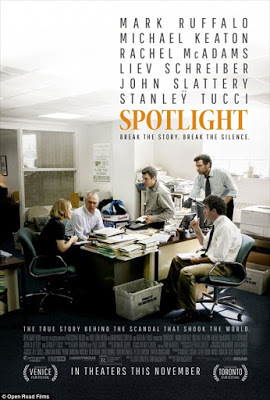
The new film Spotlight (starring Michael Keaton, Mark Ruffalo, and a stellar ensemble cast) arrives just in the nick of time. Back in 1976, when the film version of All the President’s Men was in wide release, journalism seemed like the most exciting profession in the world – and the most important. After all, the central figures in that real-life story, Washington Post reporters Carl Bernstein (played by Dustin Hoffman) and Bob Woodward (Robert Redford) , had launched the investigation that led to the fall of President Nixon and his Watergate cronies. By heeding the advice of an informer code-named Deep Throat to “follow the money,” Woodward and Bernstein uncovered a political scandal that pointed toward the nation’s highest-ranking government officials. Their investigative work, it can be argued, saved American democracy.
In the aftermath of All The President’s Men, it was no wonder that ambitious young people started enrolling in J-school in droves. But all that seems like a long time ago. In the forty years since All the President’s Men, the journalistic profession has undergone some cataclysmic changes. Newspaper advertising, once an important source of revenue, is no longer a cash cow. A host of young Americans get their news off the Internet, bypassing newspapers altogether. Some prominent daily newspapers have merged; many have disappeared. Even if you’re lucky enough to nab a staff newspaper job, you can’t count on holding it for long. As a proud member of the American Society of Journalists and Authors, I see gifted newspaper journalists struggling to have viable careers. For a number of them, it’s been necessary to leave traditional journalism in order to make a living writing advertorial materials and what’s euphemistically called “custom content.”
Which is why Spotlight is so refreshing. Here’s another true story about newspaper journalists whose investigations make a difference at the highest levels. Spotlight, which takes place circa 2001, is the story of a small, dedicated team, led by Michael Keaton, at the Boston Globe. A smart new editor, well played by Liev Schreiber, urges them to look further into the dead-end case of a Roman Catholic priest who was accused of molesting children decades earlier. The team—made up entirely of lapsed Catholics—discovers that in the heavily Catholic city of Boston any hint of malfeasance by clergy is enveloped by a conspiracy of silence uniting the Church, the courts, local politicians, and even newspapermen. By the time the truth is fully out, it implicates almost 100 priests and sets the scene for ever more wide-reaching accusations of illegal cover-ups in Boston and elsewhere.
I love the way Spotlight’s journalists (who also include Rachel McAdams and Brian d’Arcy James) really act like journalists, expending lots of shoe leather as they raise around Boston, button-holing officials, searching through dusty files, pulling out their ever-ready reporter notebooks as they assure interview subjects of their good intentions. Ruffalo, in particular, is the pitbull among them, the brash young man who’ll never let go of a promising lead. McAdams, meanwhile, is particularly good at gently persuading abuse victims to tell their tragic stories.
This is not the first time Michael Keaton has played a journalist. In Ron Howard’s charming The Paper, which chronicles 24 hours in the life of a fictive New York daily, he was as dogged and driven as he is here. But that film was more of a fantasy, with justice quickly served and a warm-and-fuzzy ending. There’s nothing warm and fuzzy about Spotlight, but it’s impossible to look away. Maybe it will help bring back investigative journalism as an honorable career.
Published on December 01, 2015 16:24
November 26, 2015
The Broken Places: Why Joseph McBride Can Be Thankful
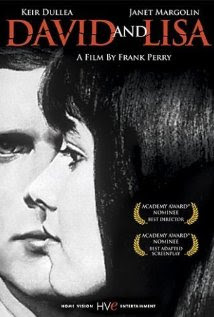
On Thanksgiving weekend, I’m thankful for my friend and colleague Joseph McBride: journalist, screenwriter, and film historian. Joe wrote the original script for Rock ‘n’ Roll High School, as well as classic biographies of such cinema greats as Frank Capra, John Ford, and Orson Welles. These days he’s a respected professor of cinema at San Francisco State University. I’m grateful to have swapped Roger Corman memories with Joe, and thankful for his many contributions to film study.
But Joe’s latest book has taught me I should be thankful indeed for not having an upbringing like his. His brand-new memoir, The Broken Places , makes me realize that although Joe and I have enjoyed similar careers, his pathway and mine have been nothing alike. I am fortunate to have grown up in a stable household, with loving parents and kindly teachers guiding my way forward. Joe’s mother and father loved him too, but his upbringing (as the eldest of seven kids in an Irish-Catholic brood) was marred by his parents’ alcoholism and vicious fights. He was educated in parochial schools, where some of his teachers were fools and others were closet sadists who used him as a scapegoat on whom to vent their anger at the world. His deep-seated need for high academic achievement was balanced by an obsession with sin that stunted his social and emotional growth. Then, at age seventeen, while urgently pulling every string that might get him into Harvard, Joe had a severe mental breakdown that left him institutionalized for many months.
All this is described in the memoir in harrowing detail. Somehow he pulled through. He credits his recuperation partly to mentors and family friends who stepped in to lend moral support. But the book’s central figure is a fellow mental patient: a young woman—as troubled as Joe himself—who upends Joe’s basic assumptions and teaches him what it means to love. Kathy Wolf, half-Native American, all-sexy, contains within her slender form a volatile blend of anger, tenderness, and desperation. She’s an astonishingly complex figure, one I can imagine seeing on a movie screen.
Every era tends to have its special movie about mental illness. I’m much too young for The Snake Pit and The Three Faces of Eve, but when I was growing up a little indie called David and Lisa (1962) seemed to speak volumes to my generation. This love story set in a mental ward struck us then as both exotic and disturbing, but Joe McBride’s true-life narrative has got it beat.
It’s fascinating to me how movies became another source of Joe’s salvation. Back when he was still suffering from severe sexual repression, he had sought an outlet in crudely erotic flicks like Russ Meyer’s Faster, Pussycat! Kill! Kill! As he began to recover, he found encouragement in sumptuous films like My Fair Lady, which provided him with a romantic escape while also suggesting (through Eliza Doolittle’s evolution) the possibility of being transformed into a functioning social being. He reached an important personal milestone on the day that he, alone among all the congregants at a Sunday mass, refused to pledge support for the Catholic Church’s Legion of Decency. This powerful body condemned such popular movies as Baby Doll, Some Like It Hot, and Psycho, even objecting to Miracle on 34thStreet, because it “reflects the acceptability of divorce” For Catholics, to defy the Legion's dictates was to commit a sin. By sitting with his arms folded while everyone else rose to take the pledge, Joe discovered in himself a passion that replaced religion with film as his true calling.
Happy Thanksgiving, Joe! And best wishes to all my readers as we head into the holiday season.
Published on November 26, 2015 11:24
November 24, 2015
Sisters: "Caring, Sharing, Every Little Thing That We Are Wearing"
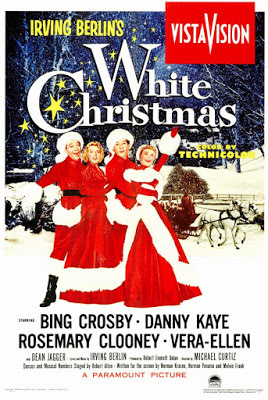
On December 18, Universal Pictures will be releasing what it hopes will be a big holiday smash: Tina Fey and Amy Poehler in a raunchy comedy called Sisters. It’s about two grown siblings who decide to throw the ultimate party before their parents sell the family home.
Forgive me, but when I hear the word “Sisters” in the context of a movie, I think about White Christmas, an amiable 1954 musical that’s something of a re-tread of the earlier Holiday Inn. Both films feature the best Christmas song ever written by a nice Jewish boy: Irving Berlin’s “White Christmas.” For the second film, which stars Bing Crosby and Danny Kaye as army buddies, Berlin also wrote a duet showcasing the two female leads, songstress Rosemary Clooney and dancer Vera-Ellen. They play sisters who are trying to launch a showbiz career via a song-and-dance act that has the guys going gaga. Their big number is “Sisters,” in which they croon about their affection for one another: “Two different faces/ But in tight places/ We think and we act as one.” At the same time, they assert their own independence: “Lord help the mister/ Who comes between me and my sister/ And Lord help the sister/ Who comes between me and my man.” Deathless lyrics, right?
Frankly, it’s a pretty silly song. But my sister and I learned it, and performed it a lot for beaming relatives. Needless to say, Tina Fey and Amy Poehler, for all their longstanding friendship, are no more actual sisters than were Rosemary Clooney and Vera-Ellen. But it occurs to me that there are a number of actual sisters who’ve made the grade in Hollywood.
Back in the early days, there were Norma and Constance Talmadge. And of course, Lillian and Dorothy Gish, who played on-screen sisters at least once, in a 1921 French Revolution melodrama, Orphans of the Storm. It isn’t surprising, really, that siblings became stars in the silent era. Many, like the sisters Gish and Talmadge, came from broken homes in which the financial need was great—and Hollywood was very much the land of opportunity.
The most famous sister pair who scored big in Hollywood? Doubtless, Olivia de Havilland and her year-younger sister, Joan Fontaine. Both became stars and Oscar winners. Though de Havilland won twice, for To Each His Own and The Heiress, she was bested in 1942 by sister Joan, whose performance in Hitchcock’s Suspicion was adjudged superior to de Havilland’s in Hold Back the Dawn. (Bette Davis, Greer Garson, and Barbara Stanwyck were also in the running.) Going head to head for the Oscar irreparably strained a relationship that had never been affectionate. Though de Havilland is perhaps best known as the mild, saintly Melanie in Gone With the Wind, Fontaine was outspoken about the fact that her sister resented her from her birth onward. As she put it years later, “I married first, won the Oscar before Olivia did, and if I die first, she'll undoubtedly be livid because I beat her to it!” In fact, she did precede her sister in death, in 2013. De Havilland lives on in Paris, aged 99.
Today’s best-known sisters are Rooney Mara and the slightly older Kate Mara. Although Kate entered showbiz first, it is Rooney who has gained the most attention, with an Oscar nomination for The Girl with the Dragon Tattoo and talk of another for this year’s Carol. Apparently they’re close—let’s hope their family feelings survive Hollywood.
This post is dedicated, with love, to my sister Judy, who leaves today for a new life overseas.
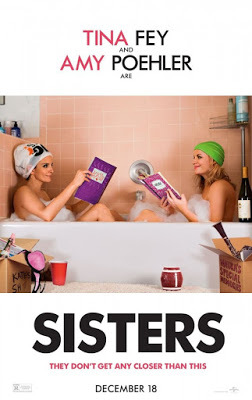
Published on November 24, 2015 13:46
November 20, 2015
Going Into Orbit Over “The Martian”
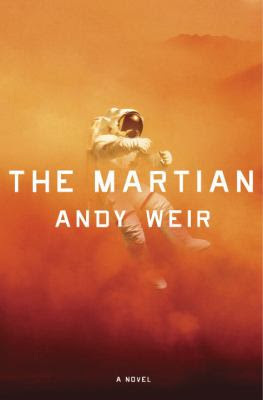
As Thanksgiving approaches, the world’s engineers and space scientists are expressing their gratitude for The Martian. This saga of a modern-day astronaut stranded on Mars is an upbeat movie that makes space exploration look exciting, shot by a team dedicated to ensuring on-screen scientific accuracy. I myself grew up in an era when space travel was regarded as a thrilling adventure, and government expenditure on space-going missions seemed like money well spent. It’s been far too long since we cheered a man on the moon. As someone with close family ties to Pasadena’s Jet Propulsion Lab, which makes an important cameo in the film, I’m personally thankful for anything that encourages voyages (manned or unmanned) across the cosmos. Let’s keep those science nerd-types employed! And while we’re doing that, let’s keep alive mankind’s dreams of exploring our universe
Though I’m rooting for The Martian because of its whole-hearted endorsement of space science, I also love this project because of what it says about the screenwriting process. I teach in the screenwriting division of UCLA Extension’s world-renowned Writers’ Program, so I count among my students many teachers and doctors and airline pilots who’re convinced they have what it take to make it to Hollywood. Most won’t get very far, but it still remains possible for would-be writers, whatever their day jobs, to hit the jackpot in the movie game.
Take the case of Andy Weir. He’s a mild-mannered software engineer who grew up, as so many engineers do, enamored of science fiction. He’s been writing stories since childhood, but his very first novel, The Martian, was truly the little spacecraft that could. Weir researched the story intently—delving into such arcane subjects as botany, orbital mechanics, and weather conditions on Mars—and then, if Wikipedia is to be believed, offered it as a free serial on his website. Once he turned it into a low-rent Kindle ebook, it was endorsed on the Goodreads site, then discovered by Crown Books . . . and the rest is publishing history.
But how did the 2011 novel become a 2015 Matt Damon movie, directed by Ridley Scott? Personally, I’m less interested in the business details than in the aesthetic challenges. Weir didn’t undertake the screenplay, which was written by Hollywood veteran Drew Goddard. Part of Goddard’s task was to explore the character of Mark Watney, who’s stranded on Mars when his crewmates leave him behind during a crisis, thinking him dead. Alone on Mars, without any initial way of communicating with earth, Mark does a great many creative things to stay alive. In a movie, we can watch him in action, but we can’t have access to his thought processes. The Mark of the novel keeps a running log, which shows us the way his mind works, and also introduces us to his vivid—sometimes profane, often very funny—voice. Movie audiences will never be satisfied with constant voiceover, so Weir’s idea of a log has evolved in the film into Mark’s series of video selfies, theoretically made for some far-off posterity. Given how much hard science is being thrown at us, it helps a lot to see Damon at his most brashly charming, spelling out his plans, crowing over his small successes, and struggling to absorb fuck-ups.
There are other good additions in the screenplay, like a deft characterization of an ultimate JPL space nerd who’s brilliant at solving problems of astrophysics but hasn’t yet figured out how to behave appropriately with actual human beings. And a new coda wraps up loose ends to give us a satisfying version of happily-ever-after.
Published on November 20, 2015 11:22
November 17, 2015
Aftermath of a Bloody Friday Evening in Paris
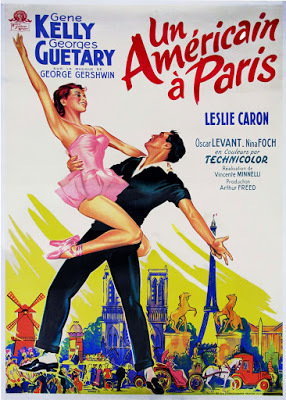
Given the sad, sad news coming out of Paris, it’s hard to imagine we’ll ever return to thinking of France’s capital as a place of music, laughter, and romance. But I wouldn’t want jihadi terrorists to deprive me of the image of the City of Light, an enchanted place where joy reigns supreme. That’s why I suspect I’ll turn to my movie memories for consolation.
Hollywood has loved Paris in all four seasons: in the summer when it sizzles, in the winter when it drizzles, and so on. I’ve drawn up a quick list of my very favorites. Among musicals, there’s of course 1951’s An American in Paris, in which Gene Kelly, Leslie Caron, and George Gershwin combine for a valentine to Paris as a city of love and art. Director Vincente Minelli actually stages the big final dream ballet as an homage to Parisian painters like Dufy and Toulouse-Lautrec. Caron also starred in 1958’s Gigi, a tuneful ode to the Belle Époque Paris of Colette, with its ambiguous morality and wonderful clothes.
Then there’s the irresistible combination of Paris and Audrey Hepburn. In the 1950s and 1960s the charming and beautifully dressed Mlle. Hepburn always seemed to be falling in love in Paris (and with Paris). Take Love in the Afternoon, where the object of her affection was William Holden. And Funny Face, made in the same year, in which Hepburn as a black-clad New York bohemian-type metamorphoses into a Paris fashion model, thanks to the skills of photographer (and love interest) Fred Astaire. In 1963, Hepburn starred with Cary Grant in Stanley Donen’s dazzling Charade, which manages to combine romance with a suspense thriller full of chases and bad guys. Three years later, she played opposite Peter O’Toole in a lighter romantic comedy, How to Steal a Million, set in the world of art forgery.
And let’s not forget the notion of Paris as a culinary capital. In 1954’s Sabrina, a chauffeur’s daughter (Audrey Hepburn again!) transforms her life when she goes off to a Parisian cooking school. When she returns, she’s so chic, and so accomplished in the kitchen, that she wins the heart of both a millionaire playboy (Holden) and his more sensible brother (Humphrey Bogart). It’s amazing what French cooking can do. Which brings me to the Pixar flick Ratatouille, which charmed us back in 2007. Its star, of course, is a rat named Remy, whose mad culinary skills enable a scrawny kitchen underling to rise into the ranks of chefdom, at the same time that he finds romance and the opportunity to launch a bistro. None other than Peter O’Toole voices the role of a stuffy restaurant critic, Anton Ego, who finally re-discovers the joy of eating, thanks to Remy’s skill and dedication. (I get hungry just thinking about the savory pleasures of this film.)
Woody Allen loves Paris, of course. His 2011 Midnight in Paris starts with the story of a romantically-inclined nebbish (Owen Wilson in the Woody Allen-clone role) on a trip to La Ville Lumière with his materialistic fiancée and her folks. Their relationship does not go well, especially after he falls under the spell of true Parisian magic, involving mysterious trips back in time to the era of his expatriate literary heroes, Hemingway and F. Scott Fitzgerald among them.
I’ve saved the best for last. There’s not much of Paris in Casablanca, but Rick and Ilsa’s memories of a happier and more peaceful time propel the World War II-era action forward. I feel that Humphrey Bogart says it best, “We’ll always have Paris.”
Published on November 17, 2015 11:54
November 13, 2015
Women in Entertainment Power 100 – The Power of Transcending Rankings
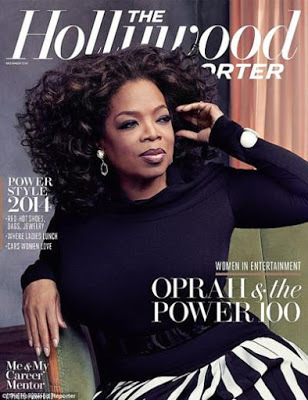
Big news on the trade paper front: The Hollywood Reporter is scrapping its Women in Entertainment Power 100 rankings. This bombshell announcement comes from the Reporter itself, by way of an article penned by its president and so-called Chief Creative Officer, Janice Min. Presumably you’re asking right about now, “So what? “
The Hollywood Reporter, which dates back to 1930, has long been one of the entertainment industry’s two favorite trade publications. (The other, of course, is Variety, which began covering the movie industry in 1933.) I wrote for The Reporter for over a decade, and so I know how much the paper loves special issues in which successful Hollywood executives and business types are featured. There’s a snappy profile for each person on the list, lots of photos, and maybe a round-table discussion among those at the top of their game. Over the years, I recall lists of the top Hollywood attorneys, the top agents, even the top doctors who cater to showbiz patients. There’s also a NextGen listing of up-and-comers under thirty. This sort of issue is a real revenue-generator: if your attorney or your client or your friend is on the list, you’re expected to take out a full page ad offering your congratulations.
The Women in Entertainment Power 100 started out, as I recall, as a Power 50. This was some 23 years ago, when Sherry Lansing had just made Old Hollywood sit up and take notice by being named chairman of Paramount Pictures. Given the significance of that event, it seemed time to laud women’s accomplishments in the entertainment industry. Over the decades the honor of being on the list led to an invitation to an exclusive lunch, with the media very much present. As I understand it, the Power 100 luncheon will continue. What’s now gone with the wind is the custom of rankingwomen in terms of their importance to the industry, with the #1 female (perhaps someone like film exec Stacey Snider or Oprah) flatteringly portrayed in living color on The Reporter’s cover.
I always enjoyed writing for the Women in Entertainment issue. It gave me an opportunity to chat with important Hollywood figures, asking about their accomplishments, their aspirations, and how they spent their (rare) leisure time. Each year there were slightly silly questions too: for instance, what profession would they choose if they were not making/selling/promoting movies? We writers never discussed rankings, and were warned never to promise that the women we were interviewing had actually made the list. Nonetheless, the rankings were clearly important, both to them and to their peers. The published article about each woman noted not only her current rank but also her position on the previous year’s list, so it was easy to spot the Reporter’s assessment of who was on the way up, who was stagnating, who was trending downward. I’m told that one episode of TV’s Hollywood-based Entourage revolved around an agent-character (played by Beverly D’Angelo) who connives to move up in rank. The Reporter’s new rationale is that women should not longer be vying against one another in a race to be Hollywood’s top (female) dog.
It was while working on a Women in Entertainment story that I chanced to meet HBO’s queen of documentaries, Sheila Nevins. She had never before been on the list, so of course she was thrilled—and delightful. From year to year, I enjoyed seeing Sheila move up in the rankings. Now I guess she’ll have to settle for being one on a list of one hundred. Which, come to think of it, is plenty good enough.
Published on November 13, 2015 09:13
November 10, 2015
My Train of Thought About Trains in Movies
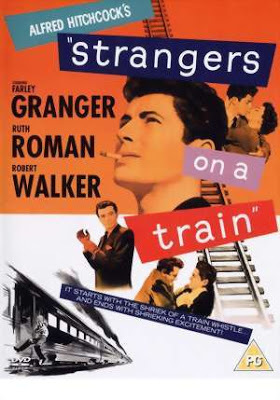
Last week I experienced a personal first: I traveled from Los Angeles to San Diego not by car, not by plane, but by railroad. The comfy Amtrak Surfliner whisked me from L.A.’s Union Station to California’s southernmost big city in just over three hours. There were no security lines to deal with; my seat was roomy; I didn’t need to fasten a seatbelt. And, of course, the view of the California coastline was spectacular.
So, naturally, I found myself thinking about movies. From the beginning, Hollywood motion pictures have always been partial to railroads. Way back in 1903 there emerged the first movie ever to boast a narrative story line Yes, I’m talking about The Great Train Robbery. This film (which famously ends with a bandit aiming his gun at the viewer) also marked the first, but hardly the last, use of a railroad train as the setting for a suspense thriller. The title itself has been pressed into service twice more. And what could be more suspenseful or more thrilling than the car-versus-train chase in 1971’s The French Connection?
In the silent era, not all railroad movies were grim. One of the funniest films I’ve ever seen is The General (1926), which stars Buster Keaton as a Civil War-era railroad engineer who saves the day for the Southern cause. The subject matter sounds serious, and yet the physical antics of the solemn-but-hilarious Keaton are guaranteed to generate laughter.
When talkies came along, musicals (“all-talking, all-singing, all dancing”) quickly followed. I can think of several that featured a big train number. In Busby Berkeley’s 42ndStreet (1933), cute Ruby Keeler both sang and danced in “Shuffle Off to Buffalo,” an elaborate tribute to honeymoon railway excursions to Niagara Falls. Keeler may have been the era’s most leaden-footed tap dancer, but she had charm, and the screen was filled with perky chorines bouncing in and out of sleeper berths, under the Pullman porters’ solicitous gaze. Thirteen years later, a musical called The Harvey Girls paid tribute to the plucky waitresses who served hot meals to travelers taking the train out west. Judy Garland played one of those waitresses, young women hired by the real-life Fred Harvey chain to bring civilized amenities to the western territories. Not much of the movie’s plot unravels on the rails, but The Harvey Girls introduced one of the great train songs of all times, the Oscar-winning “On the Atchison, Topeka, and the Santa Fe.”
While I’m talking old, old movies, I should also mention The Palm Beach Story, the 1942 screwball comedy written and directed by the great Preston Sturges and featuring expert farceurs Claudette Colbert and Joel McCrea. The plot is too complicated to explain, but Colbert’s Gerry, having decided to divorce her husband, boards a train for Palm Beach, Florida where she expects to meet and marry a millionaire. Unfortunately for Gerry, she ends up in the amiable but potentially lethal clutches of the Ale and Quail Club, a gaggle of wealthy hunters who get stinking drunk and proceed to shoot up the train car. It’s extremely funny, if you don’t take it too seriously.
Alfred Hitchcock, though, took trains very seriously indeed. In such suspense films as The Thirty-Nine Steps and North by Northwest, he saw them as places of unnatural confinement, where almost anything could happen. Then there’s Strangers on a Train, in which a naïve young man who befriends his seatmate is lured into committing a murder. Fortunately for me, my trip to San Diego passed without a single Hitchcock moment. All aboard!
Yes, I’ve left out "The Darjeeling Limited." Others?
Published on November 10, 2015 12:02
November 6, 2015
Taking the Boat (and Missing the Boat) to “Brooklyn”
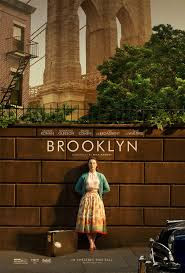
I was never a fan of the 2009 novel Brooklyn. Irish author Colm Tóibín had previously delighted me, both with his masterful re-imagining of the private life of Henry James in The Master and with his fascinating tribute to Catalonia in the non-fiction Homage to Barcelona.
By contrast to these intricate works, Brooklyn seemed a bit too simple and too, well, nice. I picked it off a library shelf because I wanted to know more about the past of the newly-hipsterfied borough of New York City. Instead I got a low-key romantic story of a young Irish woman forced by economic realities to settle in America. She’s homesick at first, and then she’s not, because she’s fallen in love. But that love ultimately forces her to make a slightly soap- opera-worthy romantic choice. Tellingly, a year after I read it, I could not remember the direction the novel’s Eilis Lacey finally took.
So much for the novel (though it was a New York Times bestseller – maybe Brooklyn hipsters were provoked by the title as much as I was). But my feelings about this book did not much prepare me for how much I enjoyed the film version, which boasts smart contributions from Irish stage director John Crowley and Oscar-nominated screenwriter Nick Hornby (An Education, About a Boy). The film’s ace in the hole, though, is its leading lady, Saoirse (pronounced Seer-sha) Ronan. Only 21, she’s had a stellar career since Atonement, which landed her an Oscar nomination at the tender age of 13. She also played the lead in the film version of The Lovely Bones and had a vivid role as the young pastry maker with the ungainly birthmark in The Grand Budapest Hotel. Though, ironically, she was born in the Bronx to Irish parents scrambling to make a living as actors, Ronan was reared from early on in an Irish village. This is the first film in which she’s played a role that reflects her own roots (as well as, apparently, facets of her own personality) and she gives it all she’s got. Eilis may seem like a frustratingly passive character, but there’s a lot going on beneath that quiet exterior, and Ronan beautifully conveys the conflicting tugs of memory and desire.
Another quiet star of the film is its production design. Brooklyn is set among the lower middle classes of the 1950s, but the campiness of Greaseis hardly part of the look. Proper clothing (like a proper manner) was important to Irish immigrants in New York City, and the changes in Eilis’s wardrobe over time tell us a lot about her personal evolution. I realized in watching this film that this is one great advantage of the cinematic medium. Tóibín can set the scene with words, but he can’t show us – as a movie can – just how the lamps and wallpaper and bric-a-brac in stores and apartments tells us something about the people who move among these things on a daily basis.
An interesting contrast is a classic film I saw last night, Luchino Visconti’s 1963 screen version of the Italian novel, The Leopard. This story of the fading ruling class in nineteenth-century Sicily has much to recommend it, including a piquant performance by fifty-year-old Burt Lancaster as the ageing patriarch. Again, the thrust of the novel is accentuated by its visuals of rambling palaces, solemn masses, and sumptuous balls. But Giuseppe di Lampedusa’s distinctive authorial voice—which sees into the future of the characters and their native soil—is missing. There are some things that films just can’t easily do.
Published on November 06, 2015 10:00
November 3, 2015
The Eloquent Silent Message of Lily Tomlin's “Grandma”

At first, Lily Tomlin as Elle Reid (aka Grandma) is not a character you like very much. She picks fights with everyone, including the barrista whose “drip” coffee offends her palate. She snaps at family members, chases off an adoring young lover, and accuses the proprietor of a Lesbian café of being not a peaceable, matriarchal bonobo so much as a gorilla. She’s financially helpless in a crisis because she’s cut up all her credit cards and made them into wind-chimes, but she’s a terror when she wields a hockey stick. Frankly, she resembles all the curmudgeonly old coots played by male actors like Ed Asner and Clint Eastwood and Bruce Dern, except that she’s probably the most unpleasant of the lot.
Then, as the movie progresses, you realize two things. First, that this is a woman who’s been deeply hurting ever since the death of her long-time partner. Second, that she’ll do absolutely anything to help her young granddaughter in her hour of need. By the end of the movie, we’re firmly on her side. And we’re rooting for her to move on with her life.
I saw Grandma at a special screening hosted by Kat Kramer’s Films That Change the World series, in conjunction with SIGNmation and a group of fans known as “The Grandma Gang.” Kat, a passionate supporter of her friend Lily Tomlin, chose to make this screening an open-caption event designed especially for deaf and hard-of-hearing members of the film community. (Open-caption implies the use of a print with subtitles visible at the bottom of the screen. Prints of this nature were promised decades ago by the film industry, but Grandma’s open-caption screening was in fact the first in 24 years.on the Sony lot.)
Part of what made the screening memorable was the presence of writer/director Paul Weitz, whose many credits include About a Boy and Little Fockers. He was also responsible for American Pie, and quipped to the audience (with the help of American Sign Language interpreter Jo-Ann Dean) about “the distance traveled between that and this film.” Grandma was written especially for Tomlin: it reflects her crusty but caring personality, though not the facts of her life. Somehow it was shot in 14 days for a mere $600,000, without studio participation but with the help of such major talents as Sam Elliott, Marcia Gay Harden, and Judy Greer. (Tomlin’s own ancient, oversized Dodge also played an important role.)
For Weitz, one key theme of Grandma is that “you can’t reduce people,” but must respect them in all their complexity. It’s a theme that resonates for the deaf community, who are always looking for opportunities to show their skills in Hollywood. That’s why two guest panelists featured at the screening were a director and an actor, both deaf, who have joined forces for an upcoming feature film, a sports drama titled The Inside Track. Jevon Whetter, a graduate of the American Film Institute, and Troy Kotsur, a veteran of the National Theatre of the Deaf, explained how their challenge couldn’t stop them from pursuing their showbiz dreams. Poignantly, Jevon noted that his own grandmother—also deaf—used to love silent movies. But when talkies arrived, she and others like her were shut out.
Thanks to Jo-Ann Dean, founder of SIGNmation (and other services for the deaf). She’s helping Kat launch “Creative Accessible Cinema & Content,” for which this screening was a pilot event. The deaf, I’ve learned, “applaud” by shaking all their raised fingers in a kind of “jazz hands” gesture. So imagine me doing “jazz hands” for all involved with this splendid evening.
Published on November 03, 2015 14:22
Beverly in Movieland
I write twice weekly, covering topics relating to movies, moviemaking, and growing up Hollywood-adjacent. I believe that movies can change lives, and I'm always happy to hear from readers who'd like t
I write twice weekly, covering topics relating to movies, moviemaking, and growing up Hollywood-adjacent. I believe that movies can change lives, and I'm always happy to hear from readers who'd like to discuss that point.
...more
- Beverly Gray's profile
- 10 followers



